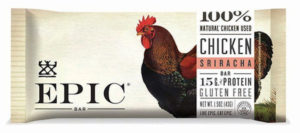Protein bars—they’re everywhere. So how do you know which are the healthiest options? We asked Bonnie Taub-Dix, R.D.N., creator of betterthandieting.com and author of Read It Before You Eat It, about how to decide.
“A lot of people look for one nutrient over another in a bar versus looking for something that is balanced,” says Taub-Dix. She stresses choosing a bar with a balance of high-quality nutrients. “Do your homework. Read labels closely, and look for ingredients that are as recognizable as possible,” she says.
PROTEIN
“I wouldn’t go lower than 4 grams of protein in a bar; closer to 6 is better,” says Taub-Dix. “I like to use the reference that 1 ounce of chicken, or about a half-cup of beans or a slice of cheese, contain 6 to 7 grams of protein.” Check the quality of the protein source, too. “Meat should be grass-fed or cage-free,” she says, adding that nuts are her top preferred protein source.”
See also High-Protein Diets and Weight Loss.
SUGAR
Sugar is not always listed as s-u-g-a-r on labels,” says Taub-Dix. “Look at the ingredient list: There could be dextrose, maltose, rice syrup or organic cane juice. ‘Organic’ may sound healthy, but it is still just sugar.” She notes that some companies are ahead of the curve in updating their labels to new standards, in which natural and added sugars are differentiated. “KIND bars are a great example, as they delineate between natural sugar from fruit and then added sugar,” she says.
FIBER
“I like to see at least 3 to 5 grams of fiber in a bar, in particular coming from nuts,” says Taub-Dix, adding that some bars can have up to 12 grams of fiber. “If you choose a bar that’s higher in fiber, be sure to drink a lot of water or fluids to help your body digest it.”
CALORIES
If you’re trying to watch your weight, Taub-Dix recommends sticking to a bar with 100 to 200 calories. If you’re athletic and work out, 250 to 350 calories is acceptable. “If you’re eating a bar before a workout, I recommend eating it at least 30 minutes ahead,” she says.
SODIUM
According to Taub-Dix, the recommended daily allowance for sodium is 2,300 mg. “Considering that so many foods we eat are processed, keep an eye on sodium in a bar versus what else you’re having during the day.”
3 BARS TO TRY
Made with 100 percent humanely raised meat, poultry and fish, these bars (with 7 to 15 grams of protein, depending on flavor) are also host to wholesome fruit, nuts and seeds for added nutrition and taste. Gluten-free and low in sugar, too.
epicbar.com
RX Bar
Each whole-food bar is made with a few simple ingredients—egg whites, fruits and nuts—all listed right on front of the label. With 12 grams of protein plus natural flavors and spices, bars are also gluten-, dairy- and soy-free. rxbar.com
The bulk of the protein (12 grams) in each of these nutrient-dense bars comes from either almonds or peanuts, with more goodness from seeds, whole grains and fruit. Other pluses: high in fiber, low in sodium and gluten-free.
kindsnacks.com




